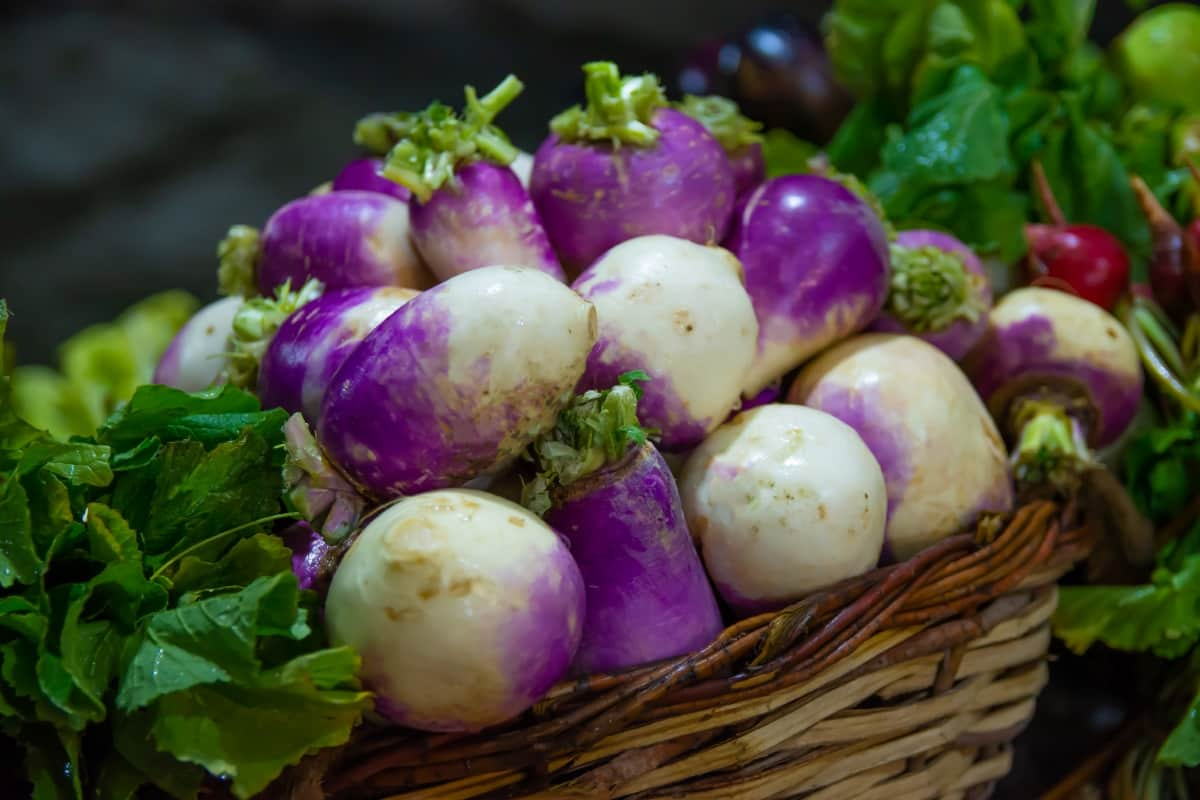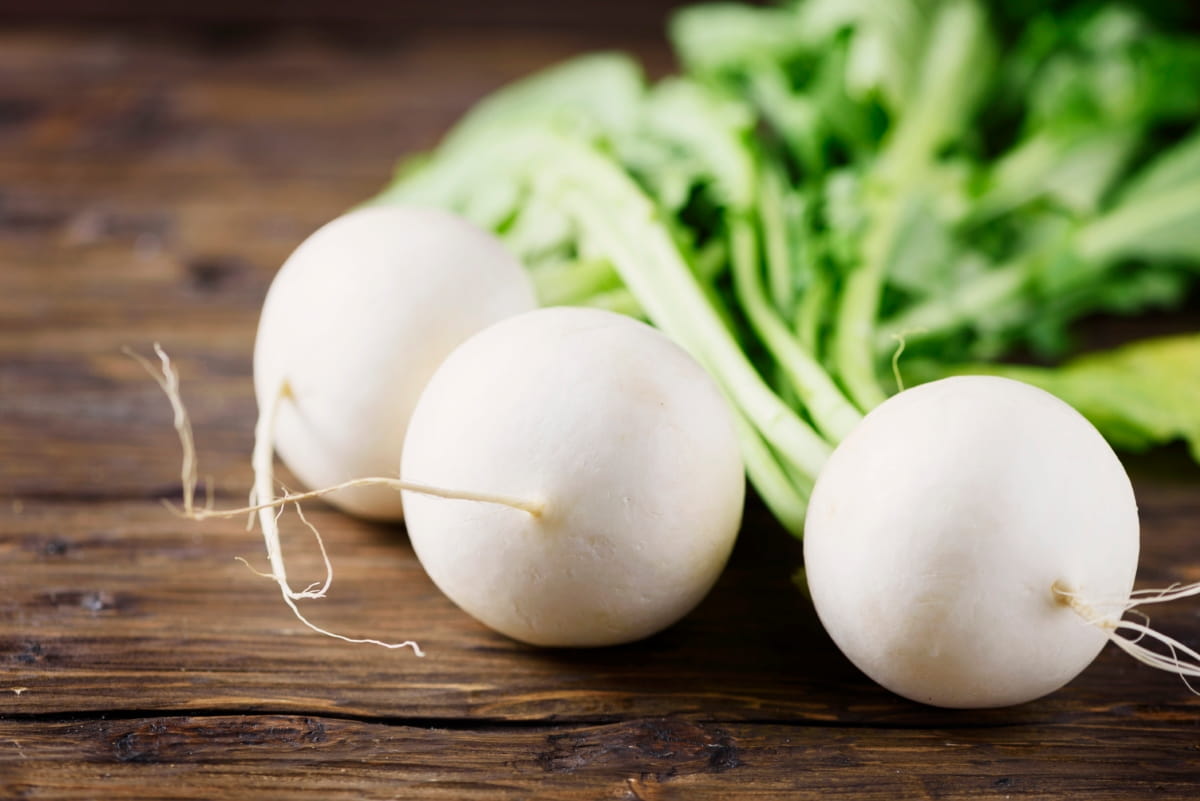Turnips, as unassuming as they may seem, have long been a staple food crop known for their versatility and resilience. They have also been recognized for their deep-rooted ability to break up heavy soils and improve soil structure. However, turnip cultivation can be further enhanced by the strategic use of companion plants.

Companion planting involves growing specific plants near benefit one another. By understanding the companion plants for turnip, their benefits, what grows well with turnips, and what should not be planted next to turnips, we have the capability to substantially improve turnip growth and yield. This article provides detailed insights into the best companion plants for turnip and their various benefits.
Benefits of Companion Plants for Turnips in the Garden
Companion planting can be an essential part of sustainable agriculture. It helps to encourage the growth and development of plants and to enhance crop yield. Among the companion plants for turnips, some play a critical role in improving the plant’s overall health and contributing to its productivity.
By creating a beneficial interplant relationship, these companion plants can help the turnip plants ward off pests and diseases and enhance their overall growth. The main benefits include pest control, improved pollination, soil improvement, increased yield, and enhanced overall biodiversity in your garden. In addition to these benefits, some companion plants can provide a visual appeal, adding beauty to your garden.
Best Companion Plants for Turnips to Deter Pests
One of the most notable turnip companion plants’ benefits is their ability to deter pests. When planted in proximity to turnips, certain plants can repel pests that would otherwise threaten the turnips. For example, allium family members, such as onions and garlic, can deter many harmful pests from turnips.
Their strong scent can confuse pests, thereby protecting the turnips from damage. Marigolds are another effective companion for deterring nematodes and other pests. Other plants, such as nasturtiums and rosemary, can also help to ward off insects that would otherwise damage your turnips.
Turnip Companion Plants for Improved Pollination
When grown in proximity to turnips, certain plants can enhance pollination, which is critical for good crop yield. Utilizing companion plants that draw in pollinators, such as bees and butterflies, can significantly enhance the process of pollination. For instance, plants like borage and lavender, with their beautiful blooms, attract various pollinators. This not only helps the turnips but also adds to the beauty of your garden.
Companion Plants for Turnip in Containers
Companion planting can be effectively utilized even in a container garden. When grown in containers with turnips, certain plants can provide mutual benefits. For instance, growing turnips with companions like thyme, rosemary, or parsley can help deter pests while providing you with a diverse yield from a single container. Moreover, these turnip companion herbs add to the visual appeal of your container garden and can provide fresh herbs for your kitchen.
Companion Herbs for Turnips in Organic Gardening
In organic gardening, where chemical pesticides are avoided, companion planting plays an even more crucial role. Herbs, in particular, can be great companions for turnips. Many herbs, such as dill, mint, and rosemary, have strong aromas that can deter pests. Furthermore, these turnip companion herbs can enhance the flavor of the turnips, providing an additional benefit.
Flowering Companion Plants for Turnips to Attract Beneficial Insects
Flowering plants are often overlooked as turnip companions. However, they can be crucial by attracting beneficial insects, aiding pest control, and pollination. Plants such as marigolds, nasturtiums, and calendula can bring in a range of beneficial insects, including ladybugs and hoverflies, known for their appetite for common garden pests. Thus, they provide a natural and effective way of controlling pests, further underlining the benefits of companion plants for turnip.
In case you missed it: 10 Common Problems With Turnips Plants: Treatment and Solutions

Companion Vegetables for Turnips in Raised Beds
Raised beds can offer the perfect setting for companion planting with turnips. Certain vegetables, when grown with turnips, can provide mutual benefits. For instance, peas and beans, being legumes, can fix nitrogen from the atmosphere and enhance soil fertility, benefiting turnip plants. Similarly, crops like spinach and lettuce can provide a living mulch, helping to retain soil moisture and prevent the growth of weeds. These are just a few examples of what grows well with turnip in a raised bed setup.
Companion Plants for Turnips to Improve Soil Fertility
The soil quality plays a critical role in the success of any gardening venture. Companion plants for turnip can help improve soil fertility and structure, paving the way for healthier and more productive turnip plants. For example, legumes like peas and beans can add nitrogen to the soil, benefiting the turnip plants. Similarly, deeply rooted plants like alfalfa can help to break up compacted soil, thereby improving soil structure and making it easier for turnip roots to penetrate deeper.
Companion Plants Chart for Turnips in the Garden
- To deter pests: Onions, Garlic, Marigolds, Nasturtium, and Rosemary.
- For improved pollination: Borage, Lavender.
- For container gardening: Thyme, Rosemary, Parsley.
- For organic gardening: Dill, Mint, Rosemary.
- To attract beneficial insects: Marigold, Nasturtium, Calendula.
- For raised beds: Peas, Beans, Spinach, Lettuce.
- To improve soil fertility: Peas, Beans, Alfalfa.
Of course, while companion planting can be highly beneficial, it is also crucial to remember that not all plants make good neighbors. Some bad companion plants for turnips include carrots, potatoes, and other root vegetables, which compete for the same nutrients and space.
Understanding Turnip Companion Plants in Crop Rotation
Understanding the concept of turnip companion plants is not limited to what you plant alongside your turnips, but it also extends to what you plant before and after them in the crop rotation. You can maintain and improve soil fertility and manage pests and diseases by rotating crops. For example, planting a crop like beans or peas, which fix nitrogen into the soil, before planting turnips can provide nutrient-rich soil for the turnips to thrive.
In case you missed it: Basil Companion Plants: What to Plant Next to Basil and What Not to Plant Next to Basil

Conversely, following turnips with a heavy feeder crop can benefit from the improved soil structure that the turnips leave behind. Companion plants used in crop rotation with turnips are essential for preserving soil and plant health, optimizing yield, and promoting sustainable gardening practices.
Conclusion
Companion planting with turnips is a natural, effective, and sustainable way to enhance your turnip plants’ growth, yield, and overall health. You can leverage the benefits of companion planting by understanding what grows well with turnip and, equally importantly, what should not be planted next to turnip. Whether you’re planting in containers, raised beds, or a traditional garden plot, a companion plant strategy can work for your turnips.
- Feed Your Flock for Less: Top 10 Tips to Save on Chicken Feed
- Ultimate Guide to Ossabaw Island Hog: Breeding, Raising, Diet, and Care
- Hatching Answers: The Top 10 Reasons Your Chickens Aren’t Laying Eggs
- Eggs and Economics: Breaking Down the Cost of Raising Backyard Chickens
- Defend Your Greens: Proven Methods to Keep Iguanas Out of Your Garden
- Ultimate Guide to Cinnamon Queen Chicken: A Comprehensive Guide for Beginners
- Ultimate Guide to California Tan Chicken: Breeding, Raising, Diet, Egg-Production and Care
- Ultimate Guide to Marsh Daisy Chicken: Breeding, Raising, Diet, and Care
- 10 Types of Chicken Farming Businesses You Can Start for Profits